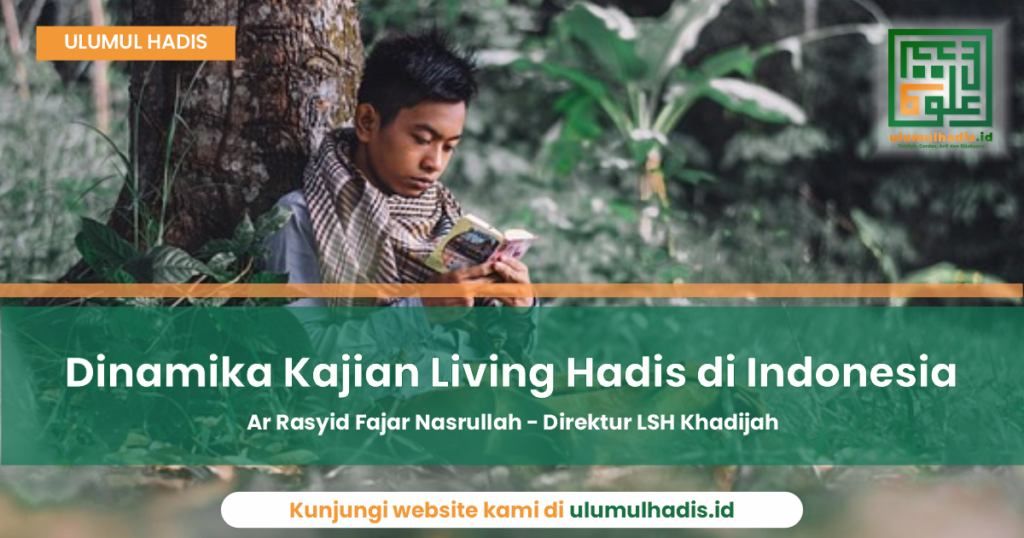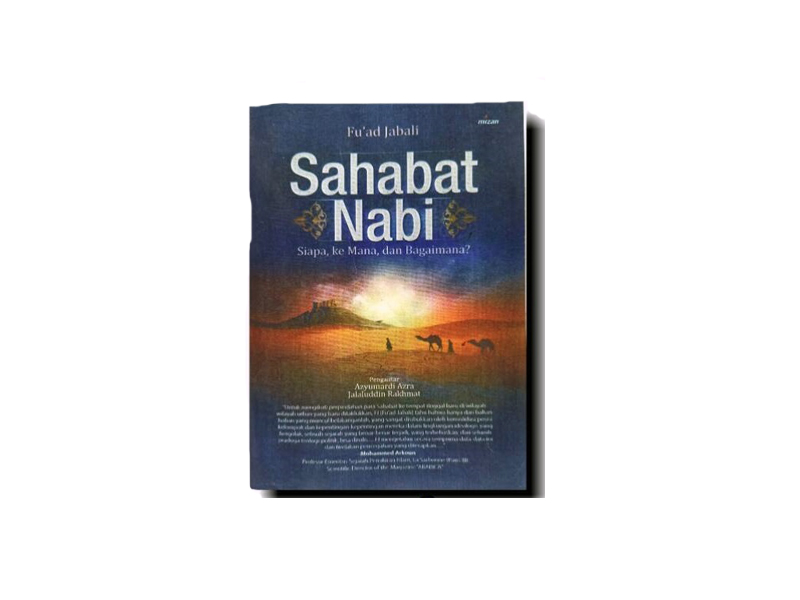ulumulhadis.id – These questions often accompany the concern over studying hadith in the modern era: Why should Muslims pursue Hadith Studies, a field seen as static and having reached its peak in medieval Islam? Why do they concern themselves with cautiously and critically investigating the Prophet’s tradition that was already examined by early Muslim scholars?
Given the centrality of hadith in Islam, second only to the Qur’an, and the extensive development of hadith studies in the past, it may be surprising that modern Hadith Studies specialists, particularly in the non-Arabic-speaking world, consider the discipline to be involutive, repetitive, or even stagnant (Kuntowijoyo, 2006; Hasan, 2013). To some extent, these criticisms are justified when religious studies must be made ‘down-to-earth’ and relevant to modern society. Students and researchers of Hadith Studies face the dilemma of (re-)studying classical hadith literature, while global scholars have shifted toward interdisciplinary, revolutionary, and modernized research.
Baca Juga: Memahami Lebih Dalam Cabang-Cabang Dalam Ilmu Hadis
Works of Musṭafā al-Aʿzamī (1967; 2002), Nūr ad-Dīn ʿAtar (2008), and Jonathan A.C. Brown (2009) provide evidence that the study of classical hadith literature remains unfinished. Al-Aʿzamī, for instance, describes how early Muslim scholars developed strategies and methods for compiling and critiquing thousands of hadith narrations that spread globally. He notes how personal and educational backgrounds influenced the compilers’ (muṣannifs’) methodologies and works, which, in turn, affected the acceptance of their works in later periods, as they were read, recorded, combined, copied, collected, and commented upon.
In contrast, ʿAtar categorizes classical hadith literature based on themes, transmission lines, or the alphabetical order of the last transmitter or the narration itself. He also identifies works that combine earlier sources (al-majāmiʿ), authenticate hadith (takhrīj), isolate certain narrations from a single narrator (al-ajzāʾ), honor a teacher (al-mashyakhāt), falsify certain narrations (al-ʿilal), or create indexes (al-muʿjam al-mufharas li-alfāẓ al-ḥadīth an-nabawī).
Jonathan Brown, on the other hand, focuses on musannaf and musnad collections and the development of scholarly discourse on hadith during the early to mid-eighth century. He argues that the upsurge of musnad collections in later periods was driven by advancements in Islamic law. Brown highlights that the urgent need for authentic hadith as sources for legal reasoning encouraged scholars to formulate strict criteria for authenticating oral narrations and eliminating forgeries. Additionally, scholars sought rare narrations from distant lands to feel connected to the Prophet and earn scholarly respect.
Hashim Kamali, in agreement with al-Aʿzamī and other enthusiastic hadith scholars, discusses taḥammul-l-ʿilm-l-ḥadīth (the reception of hadith knowledge) and adāʾuhu (its transmission). Kamali lists one precondition for receiving hadith, tamyīz (intellectual discernment), along with five other conditions: being Muslim, being part of the majority, having sound intellect, just character, and good memory.
In the early period of Islam, before the compilation of the kutūb as-sittah (six major hadith collections), the absence of sound written collections made Muslim scholars highly critical of any information related to the Prophetic sunna. Transmitters, recorders, and collectors of hadith were required to prove their authenticity by specifying how they had received the narrations.
In early Islam, learning hadith was free. The Prophet Muhammad himself was the primary teacher of the sunna. His Companions stayed close to him, absorbing as much of his teachings as possible. Some Companions wrote down aḥādīth (plural of hadith) and recorded their knowledge of the Prophet’s life, while others transcribed what he dictated to them. They memorized their experiences and shared them with each other, transmitting them to their students both orally and in writing. After the Prophet’s death, the Companions took on the responsibility of spreading his teachings, whether in verbal, written, or practical forms.
During the first two centuries of Islam, the collection and dissemination of hadith knowledge expanded significantly as more Muslims sought to connect themselves to the Prophet. Centers of hadith learning and transmission were established across the Muslim world, despite the need for extensive travel and long journeys. New methods of learning were developed to collect and master hadith knowledge from teachers, who were often the Prophet’s Companions or their followers.
Al-Aʿzamī (2002) identified eight methods used by the Companions, with the first being in widespread use, while the others were less favored or even negligible. These methods include samāʿ (hearing), ʿard (presentation), ijāzat (authorization), munāwalat (transmission by handing over), kitābat (writing), iʿlām (notification), waṣiyyat (testament), and wajādat (finding). Al-Aʿzamī claims that the last seven methods often relied on written materials from hadith teachers or recorders. He emphasizes that rigorous and strict methodologies were formulated to produce reliable systems of isnād (chains of transmission) and to eliminate aḥādīth passed on by invalid or unreliable sources. These discussions lead to an exploration of the history and methodology of early hadith criticism and its development into classifications and grading of isnād and matn (the content of the hadith).
Mohammad Hashim Kamali (2014) also points out that Muslim transmitters used specific terminologies to indicate how they received hadith and debated the nuances of their usage. For instance, when only one student was present, they would likely transmit the hadith using the word ḥaddathanī (so-and-so spoke to me), akhbaranī or anbaʾanī (so-and-so informed me), or samiʿtu (I heard so-and-so). When multiple students were present, they would use plural forms such as samiʿnā (we heard) or ḥaddathanā (he spoke to us).
When a transmitter heard a narration directly from their source, they were expected to use precise terms like samiʿtu or samiʿnā rather than vague phrases like qāla (he said) or dhakara lanā (he mentioned to us), which could cast doubt on whether the narration was directly heard. Such preconditions and terminologies are illustrated in reliable hadith literature like Ṣaḥīḥ al-Bukhārī, where the author includes a chapter on brief interactions between a hadith teacher and students in Bāb man Samiʿa Shay’an fa-Rajaʿa (Chapter on Who Heard Something and Left). Contemporary scholars such as Shaykh Amīn and Muṣṭafā Dayb al-Bughā continue to uphold this focus on direct, intense interaction between the transmitter and receiver of hadith.
References:
‘Atar, Nūr ad-Dīn. 2008. Manāhij al-Muḥaddithīn al-‘Āmat fī ar-Riwāyat wa at-Taṣnīf. Damascus: Tayyiba
al-Azami, Muḥammad Mustafa. 1978. Studies in Ḥadith Methodology and Literature, Indiana: American Trust Publications.
_____. 1980. Dirāsat fī al-Ḥadīth an-Nabawī wa Tārīkh Tadwīnihi. Amman: Al-Maktab al-Islāmī
Brown, Jonathan AC. 2009. Hadith: Muhammad’s Legacy in the Medieval and Modern World, Oxford: Oneworld.
Hasan, Noorhaidi. 2013. The Making of Public Islam Piety, Democracy and Youth in Indonesian Politics. Yogyakarta: UIN Suka Press.
Kamali, Mohammad Hashim. 2014. A Textbook of Hadith Studies: Authenticity, Compilation, Classification and Criticism of Hadith. Leicestershire: Kube Publishing Ltd.
Kuntowijoyo. 2004. Islam sebagai Ilmu: Epistemologi, Metodologi, dan Etika. Yogyakarta: Teraju.
Schoeler, Gregor, Uwe Vagelpohl, and James E. Montgomery. 2006. The Oral and the Written in Early Islam. London: Routledge.




